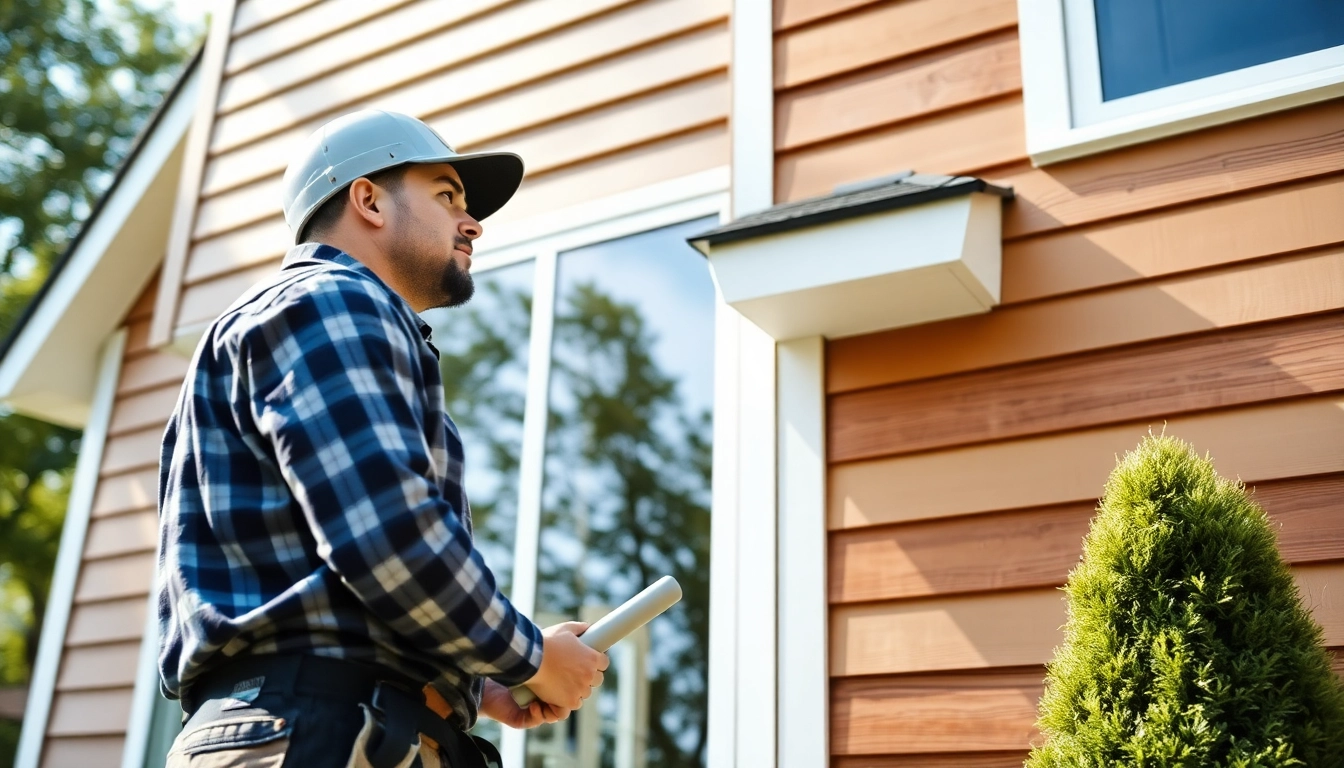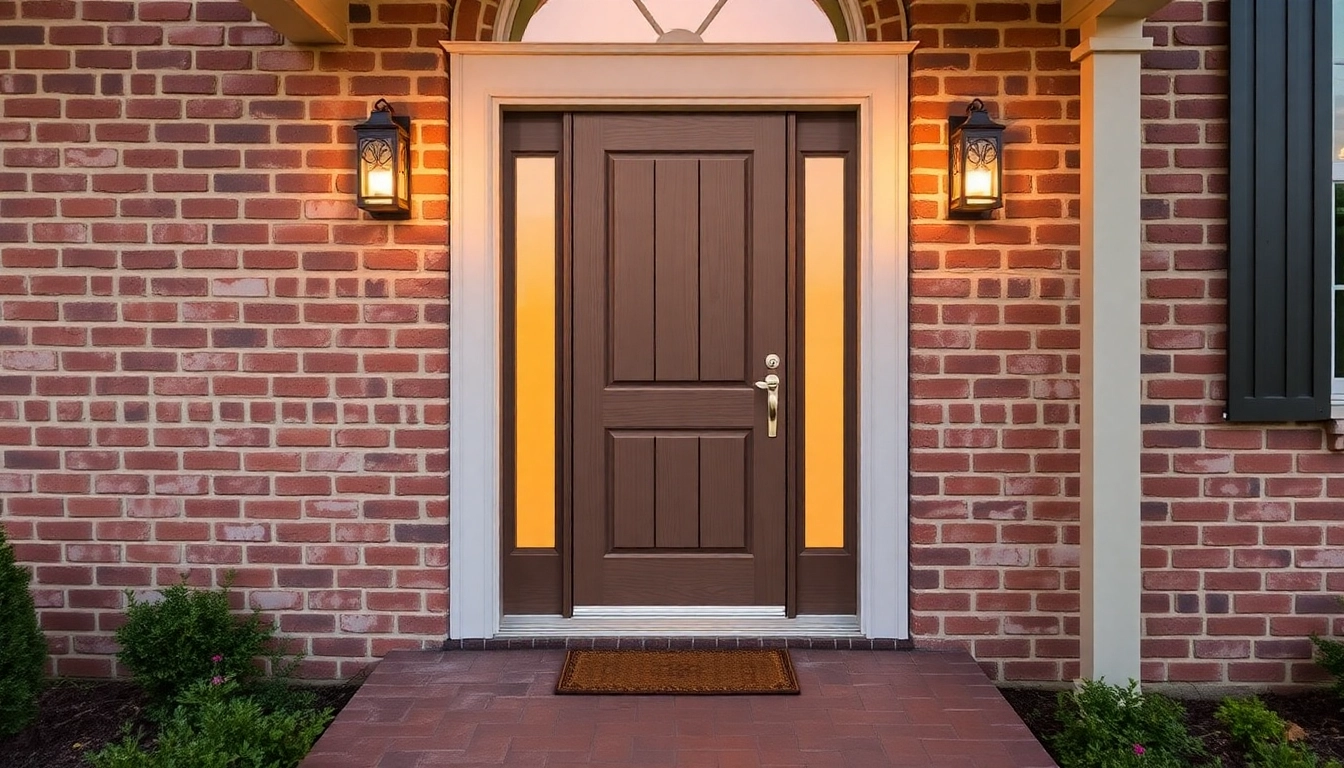Understanding Siding Options and Materials
Your home’s exterior not only reflects your personal style but also serves as the first line of defense against environmental elements. Selecting the right siding is crucial to ensure durability, aesthetics, and energy efficiency. As a leading siding contractor, our goal is to guide homeowners through the diverse world of siding materials, helping you make an informed decision tailored to your climate, budget, and design preferences.
Types of Siding: Vinyl, Cedar, Hardie, and More
The spectrum of siding options available today ranges from traditional to innovative materials, each offering unique benefits.
- Vinyl Siding: One of the most popular and affordable options, vinyl siding is celebrated for its durability, low maintenance, and wide array of colors and styles. It resists pests and moisture, making it a practical choice for many homes. The cost typically ranges between $2.50 to $10.75 per square foot for installation.
- Cedar Siding: Known for its natural beauty, cedar siding provides a warm, rustic look with excellent insulation properties. It requires periodic sealing or staining to maintain its appearance and prevent decay. Cedar is often favored for cottages and historic restorations.
- Hardie (Fiber Cement) Siding: Manufactured by James Hardie, this material mimics the appearance of wood but offers superior durability against fire, pests, and weather. Hardie siding can be painted in any color and is resistant to moisture, making it ideal for areas with high humidity.
- Metal Siding: Aluminum and steel options are valued for their longevity and modern aesthetics. Metal siding is lightweight, fire-resistant, and requires minimal maintenance, making it suitable for commercial and residential projects.
- Other Materials: Including stucco, brick veneer, stone, and composite panels, these materials are chosen based on architectural style, regional climate, and personal taste, often reflecting a more high-end or traditional aesthetic.
Choosing the Right Siding for Your Climate and Style
Climate plays a significant role in siding selection. For instance, regions prone to heavy rainfall or humidity benefit from fiber cement or metal siding due to their moisture resistance. Conversely, colder climates may prioritize insulation-friendly materials like cedar or insulated vinyl.
Aesthetic considerations include architecture style—Victorian homes often feature cedar, while modern designs might lean toward sleek metal or fiber cement. Color schemes, textures, and architectural details should complement overall home design, ensuring a cohesive appearance.
Benefits of High-Quality Siding Installation
Investing in professional installation ensures that your siding performs optimally, providing benefits such as enhanced curb appeal, increased energy efficiency, and long-term durability. Proper installation minimizes issues like warping, cracking, and water infiltration—common problems that can compromise your home’s integrity if overlooked.
How a Professional Siding Contractor Ensures Optimal Results
Assessment and Planning for Your Siding Project
A comprehensive assessment begins with evaluating your existing structure, understanding your aesthetic goals, and considering regional environmental factors. An experienced siding contractor inspects your home’s exterior for issues like rot, mold, or structural damage—addressing these before installation prevents future problems.
Planning involves selecting appropriate materials, determining the scope of work, establishing timelines, and preparing a detailed project budget. Accurate measurements and site analysis are vital to avoid underestimating costs and to ensure precise installation.
Proper Installation Techniques for Durability and Aesthetics
Skilled contractors follow manufacturer specifications and industry best practices to ensure seamless siding application. Techniques include:
- Using quality fasteners and adhesives for secure attachment
- Ensuring proper alignment for a uniform appearance
- Incorporating weather-resistant barriers and flashing to prevent water intrusion
- Providing adequate ventilation to avoid moisture buildup behind the siding
This meticulous approach prolongs the lifespan of your siding and maintains its aesthetic appeal.
Inspection and Warranty for Lasting Satisfaction
Post-installation inspection verifies that the siding meets quality standards and adheres to safety codes. Reputable contractors offer warranties covering both materials and labor—providing peace of mind and protection against defects or installation issues.
Cost Factors and Budgeting for Siding Projects
Average Cost of Siding Per Square Foot
Costs vary based on material, complexity, and regional labor rates. On average:
- Vinyl siding: $2.50 – $10.75 per sq ft
- Cedar sidings: $6 – $12 per sq ft
- Fiber cement (Hardie): $5 – $14 per sq ft
- Metal siding: $5 – $15 per sq ft
These prices include materials and installation but may fluctuate based on project specifics.
Pricing Variations Based on Material and House Size
Larger homes typically experience economies of scale, but overall costs increase with sating area. For example, a standard 2,000 sq ft house may incur siding costs between $10,000 to $40,000 depending on material:
- Vinyl: $5,000 – $21,500
- Cedar: $12,000 – $24,000
- Hardie: $10,000 – $28,000
Additional expenses include removing existing siding, repairs, permits, and site preparation.
Hidden Costs and How to Get Accurate Quotes
Hidden costs can include:
- Structural repairs (e.g., replacing rotted sheathing)
- Removal and disposal of old siding
- Permits and inspections
- Accessibility challenges
To mitigate surprises, request detailed written estimates, ensure they account for potential contingencies, and verify references and credentials.
Steps to Hiring the Right Siding Contractor
Research and Reviews: What to Look For
Begin by seeking local, highly-rated siding contractors with extensive experience and positive customer feedback. Key indicators include:
- Strong online reviews and testimonials
- Proper licensing and insurance
- Prolonged presence in the community
- Clear, detailed quotes and contracts
Platforms like Angi, Houzz, and Yelp can provide verified reviews that help gauge reputation.
Questions to Ask Before Signing a Contract
Protect your investment by asking:
- Can you provide references from recent projects?
- What materials and brands do you recommend?
- What is your project timeline?
- Do you offer warranties and what do they cover?
- How do you handle unforeseen issues or delays?
A transparent contractor will openly discuss these topics and provide documentation.
Ensuring Quality Workmanship and Timely Completion
Confirm that the contractor employs skilled installers and adheres to safety standards. Use detailed contracts with milestones and clear payment schedules. Regular communication and site inspections help prevent delays and quality lapses.
Maintaining Your Siding for Long-term Beauty
Regular Cleaning and Inspections
Routine cleaning extends your siding’s lifespan and preserves its appearance. This includes gentle washing with mild detergent and water, removing mold, mildew, or dirt buildup. Conduct visual inspections bi-annually or after severe weather events to identify cracks, warping, or pests.
DIY Tips Versus Professional Maintenance
Simple cleaning and minor repairs can often be handled by homeowners, but professional inspections and repairs are recommended for deeper issues to prevent costly damages. Professionals can also advise on sealing, painting, or restoring older siding.
When to Consider Siding Repair or Replacement
Signs that your siding needs attention include:
- Cracks, warping, or sagging
- Excessive mold, rot, or pest infestation
- Fading or peeling paint
- Increased energy bills despite good insulation
If repairs become frequent or extensive, replacement might be a more cost-effective and aesthetically pleasing solution.






